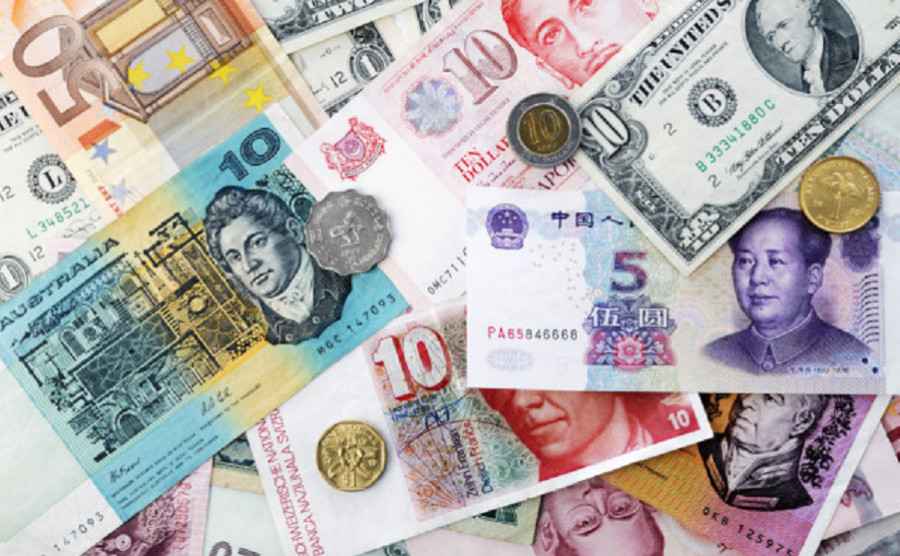Employers' payroll costs skyrocketed, and Americans' spending unexpectedly soared with them. All together makes Wall Street wary of a possible recession. But is everything really terrible, or is there an advantage for traders in this situation? We understand.
US inflation and a little about trading strategies
Consumer hype
Price-adjusted trade volume rose 0.2% in March after rising 0.1% a month earlier (February also adjusted). The growth was shown by the service sector, but the purchase of goods fell, which indicates a change in behavioral patterns as quarantine easing.
At the same time, spending on goods, adjusted for inflation, fell by 0.5% compared to February, while spending on services rose by 0.6%, which means the largest growth in eight months.
The price index for personal consumption expenditures, which is used by the Federal Reserve as the main one, rose by 0.9% compared to February and by an impressive 6.6% since March 2021, showing highs since 1982. Unadjusted for inflation, spending rose 1.1% from the previous month.
This scenario differs sharply from the 0.1% decline predicted by economists from February values.
The recovery in demand is understandable.
Thus, the core PCE price index - excluding food and energy - rose by 0.3% compared to the previous month. This is up 5.2% compared to a year earlier. The dynamics is declining, showing a slowdown compared to the growth of 5.3% in February.
As a result, prices continue to rise at an insane pace, but two years of government support have allowed Americans to accumulate some savings. Now they are in a hurry to invest capital, if not as an investment, then at least to purchase goods to the maximum, until prices rise even more. Shortages caused by disruptions in imports from China are boosting demand on the other side.In other words, in March we saw what is called a "deficit economy."
Despite this, analysts predict that demand for disposable goods will grow, but for durable goods, on the contrary, it will decline. This is not like the typical behavior of buyers who, in difficult times, try to acquire better quality items with a long service life, "investing" in household items, interior, and movement.
As for the housing and car markets, rising interest rates should dampen demand for luxury and new cars as well.
Despite rising consumption, US GDP declined in the first quarter for the first time since 2020. The main reason is the growing trade deficit. Net exports fell in the extreme conditions of the second quarter of 2020. It also affected US GDP more than in any other quarter of this century.
The personal savings rate also fell to 6.2% in March, the lowest level since 2013. And it's probably not so much a return to the usual accumulation/investment models, but an attempt to invest as much money as possible before they depreciate.
However, not only household expenses increased, but also the expenses of enterprises for wages of hired personnel.
Are wages going up or not?
The labor cost index, used as a broad measure of wages and benefits, rose 1.4% in the first quarter, up from 1% in the last quarter of 2021, according to the latest data from the US Department of Labor.
Overall labor costs (not distorted by job changes, etc.) jumped 4.5%, the highest recorded in the new century.
The increase in wages in the last quarter covered almost all industries, including the manufacturing sector and the service segment.Wages for civilian workers rose 4.7% year-over-year, also the highest on record. Benefits also climbed 4.1%. Pay in the private sector (not including the public sector) increased by 5% compared to last year.
Overall, wage increases are a key part of the inflationary picture and signal to investors that manufacturing cost increases are rising, ultimately increasing margins and the final price for the consumer.
But does the increase in wages cover the increase in prices?
A separate report showed that the Fed's preferred measure of inflation, the Personal Consumption Expenditure Price Index, rose 6.6% on the month, its highest since 1982.
So no, workers' wages have not kept pace with prices as price pressure has slowly built up over decades, hiding behind the Fed's low interest rates.
The crisis in the labor market may be evidenced by the fact that the increase in vacancies breaks all records, obviously not being attractive enough for employees even with new salaries and social benefits.
Unfortunately, production is being hit not only by understaffing, but also by rising prices for raw materials and problems with delivery. All together, it is capable of driving the manufacturing sector into depression.
US stocks pull back
Judging by the reaction of the markets, investors correctly assessed the information, continuing to pump funds into shelters. The tech giants failed their sector, while China propped up the Asian region and its stocks with promises of more subsidies.
The S&P 500 plunged 1% and Nasdaq futures fell even more, down 1.2% on Amazon.com Inc.'s expected negative earnings report. and Apple Inc. predicting a drop in production due to a shortage of components. Shares of Tesla Inc. rose in the US premarket after Elon Musk said he no longer plans to sell shares.
The European Stoxx 600 is up on mining stocks.
The reporting season as a whole helped cushion losses during a turbulent year, despite disappointments. However, experts are not concerned about individual episodes of restrained earnings forecasts, but significant fluctuations in the sector - both intraday and weekly. The earnings of some companies were unpredictable, and the markets were too impressive on some days. And analysts call it a sign of an "unhealthy" market.
Despite this worrisome fact, the S&P 500 has seen earnings growth of 4.3% year-on-year, with 86% of companies outperforming expectations.
But the Nasdaq 100 fell 9.3% in April, the worst performance since November 2008, as growth stocks are in disgrace with the start of the inflationary demarche.
Investors are pricing risks from continued Covid troubles in China and economic fluctuations to the impact of the Federal Reserve on the US economy and Russia's wars in Ukraine as complicating the overall situation, but often not even the main ones.
US bond yields flattened on Friday as traders ponder the Fed's reaction to the latest reports. Experts are debating how much the US central bank can tighten policy before the economy enters recession. Markets continue to forecast a half-point Fed rate hike next week, even as voices grow stronger that US policymakers will implement the most aggressive rate hike since the 1980s to curb inflation.
Are there opportunities for traders in this situation? Certainly.
Trading strategies during inflation periods
First, specifically for America, inflation is not as terrible as it is seen from the inside (when there is nothing to compare). The same core personal consumption expenditure index, published quarterly as a share of GDP, has gained over 5% and, yes, that's a lot. Nevertheless, the final result is still lower than expected and did not reach 6%.
The second global factor is a strong dollar.
A strong currency is good for imports because the final price will be lower, but it's also bad for growth because it makes your own goods more expensive in both domestic and foreign markets. If you take the DXY dollar index, which measures the dollar against a number of other currencies of developed countries with an emphasis on the euro, it turns out that the dollar has strengthened to its highs over the past 20 years.
A combination of factors plays a role here: the weakness of the euro, the fall of the yen due to the controversial policy of the Bank of Japan and the active redirection of finances to safe havens, one of which is the dollar (for developing countries). Even the yuan, after the start of the pandemic, again grew against the dollar due to constant quarantine problems within the country, which a year ago was considered a completely lost situation.
On the other hand, we have a global correction of the debt index of developing countries - the third largest since the beginning of the 2000s.
One way or another, but the dollar now has no strong rivals, this leads to its hegemony.
As a result, the overall picture is as follows: the dollar finishes off other currencies, except for strong commodities, bonds fly down, while commodities gather all the bulls of the world around them. Stock markets, on the other hand, fluctuate between those and those, in full agreement with the theory of "accidental hit".
With regard to traders, the carry-trade strategy (Carry Trade, "opened and hold") is more popular than ever, when a loan is taken in the currency of a country where interest rates are still low, and then distilled into the currency of a country with high rates.
If we take specific currency pairs, then, as in the previous crisis cycle, the yen and the Brazilian real are especially popular. The latter was in great demand just in 2008. Precisely because there is always a certain time interval between the moment when the currencies of developing countries collapse before everything collapses. And for traders, this is a rare opportunity.In addition, you can always invest in the stock assets of countries with a strong economy (yes, this undermines your own, but it can be a salvation for a private investor).
And in general, such extreme currency movements are always a great opportunity for traders. For example, you can use JPY to buy USD and buy dollars to earn interest on overnight loans, for example. There are many other options: buying stock market assets for these dollars and receiving both dividend and speculative income from this transaction.
On Friday:
Treasury bonds fell and now the yield on 10-year US bonds is 2.89%.
The yen fell sharply, remaining near a 20-year low. The euro, pound and commodities-linked currencies gained while the dollar fell on the news.






















